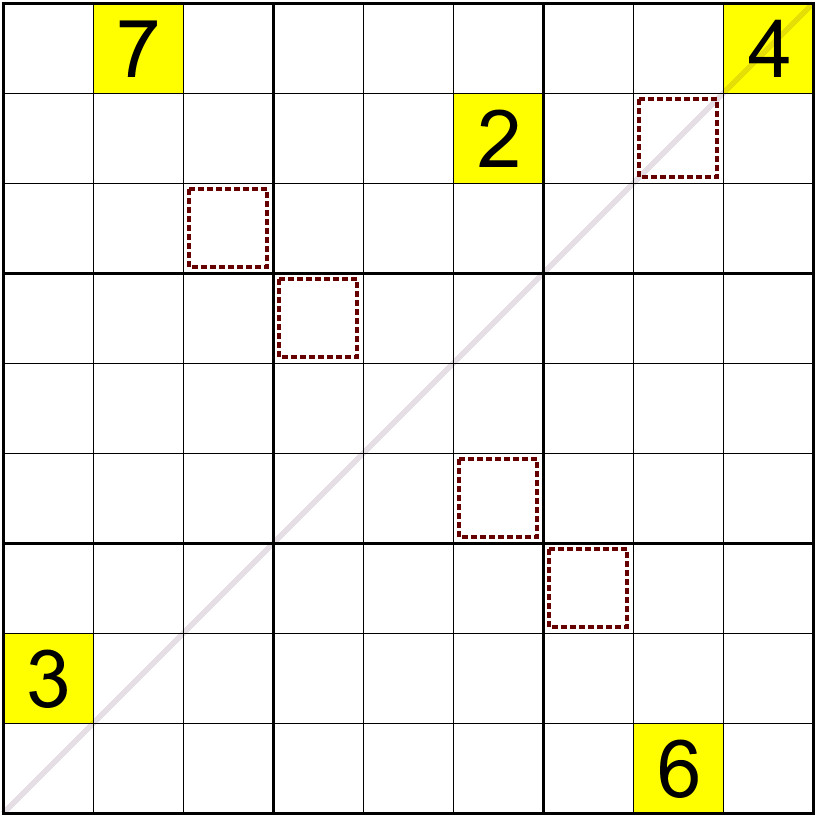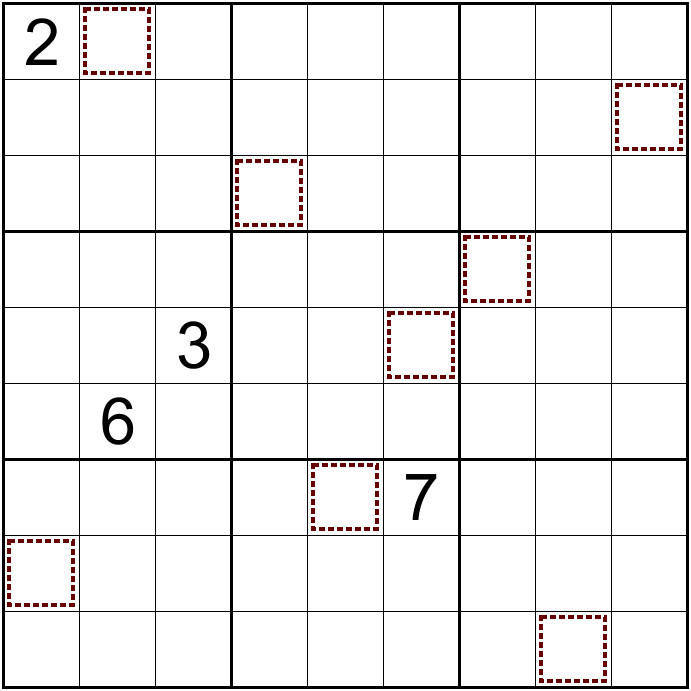Rules:
• All sudoku rules apply.
• Some rows and columns are divided into two compartments by a gray cell
• Each compartment, vertically or horizontally, must contain a straight – a set of consecutive numbers, but in any order. For example: 7, 6, 4, 5 is valid, but 1, 3, 8, 7 is not.
• Each puzzle has a UNIQUE solution
Benoku Definition:PDF
Benoku Sample (Hard)
Gray cells are shown with [ ]
- Code: Select all
0 [0] 3 | 0 0 0 | 0 0 0
0 0 0 | 0 0 [0] | 0 0 0
0 0 0 | 0 0 0 | 0 0 0
----------------------------------------
[0] 0 0 | 0 0 0 | 2 0 0
0 0 0 | [0] 0 0 | 0 0 0
0 8 0 | 0 0 0 | 0 0 [0]
----------------------------------------
0 0 [0] | 0 0 0 | 0 0 0
4 0 0 | 0 0 0 | [0] 0 0
0 0 0 | 0 0 0 | 0 0 0



